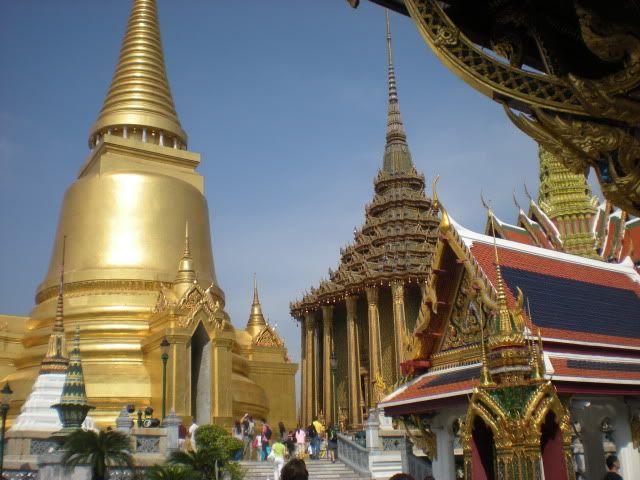
Wat Phra Kaew, or Temple of the Emerald Buddha, is the most sacred Buddhist shrine in all of Thailand. It is actually a collection of 100 buildings of all different styles of architecture covering 234 acres of land. I had 83 photos to whittle down when I started this and not one of them could convey the scope of the compound. The above picture is the best, but is mainly just Phra Sri Ratana Chedi, which is a stupa that houses a piece of the Buddha's breastbone, and the Phra Mondop library. In the foreground you can also see one of the twelve pavilions where scholars would chant the Jatakas, or stories of the previous lives of the Buddha, on important days of the Buddhist calendar.
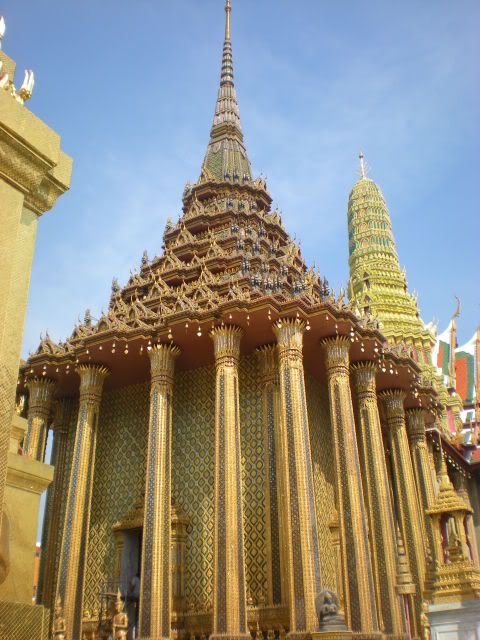
Above is a better view of Phra Mondop, the library built by Rama I, which houses the Tripitaka, or sacred Buddhist manuscripts.
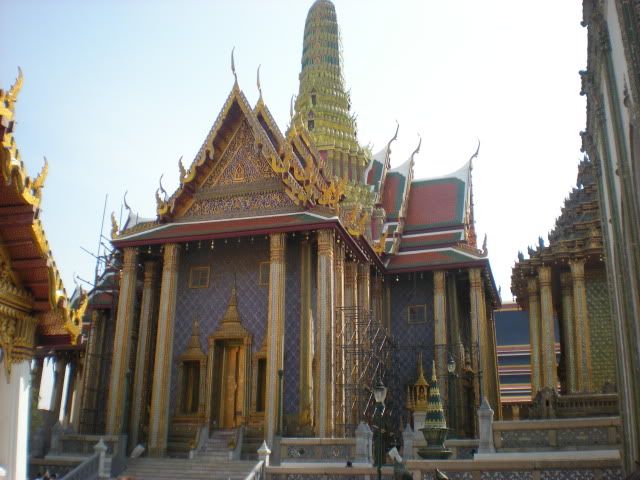
Next we have the Prasat Phra Thep Bidom, which means Shrine of the Celetial Ancestors, also known as the Royal Pantheon. It was built by Rama IV to house the Emerald Buddha, but was not completed until after he died. Rama V thought it too small for royal ceremonies, so instead it houses life size statues of Kings Rama I-VIII. This building is only open once a year on Chakri Day (the Kings Rama being the Chakri Dynasty), April 6.
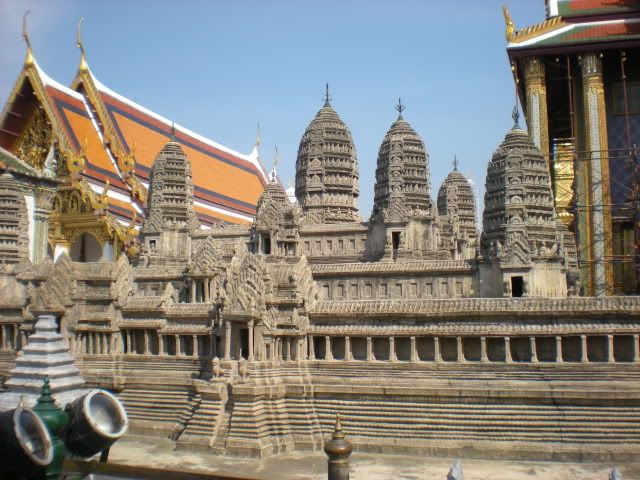
Also in this area is a scale model of Angkor Wat, located in Cambodia, the largest religious building in the world. You can find a lot of explanations on the internet for why King Rama IV commissioned this model, the most neutral of which is that Cambodia was once ruled by Thailand, and he wanted the Thai people to see the most epic Wat in all of the Kingdom. (Would this be a World's Smallest Version of a World's Largest Thing?)
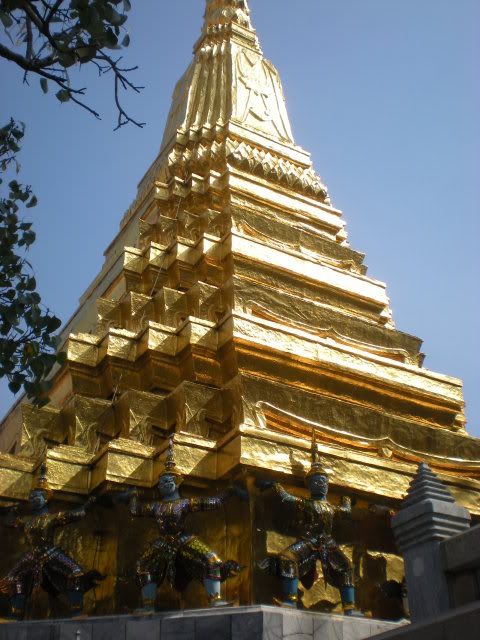
Next we have one of the two Golden Chedis built by King Rama I to honor his father and mother, with a close up (below) of the figures from the Ramakien (more on this in a minute) supporting the Chedi.

Before we get to the Ramakien Gallery, let's talk about some of the mythological figures located throughout the grounds.

Above is my favorite, the Nok Tantima guarding the Phra Viharn Yod (or Phra Wihan Yot). The building houses the Phra Nak Buddha image. The Nok Tantima, or Tantima Bird, is a relative to the Garuda of Hindu and Buddhist mythology.
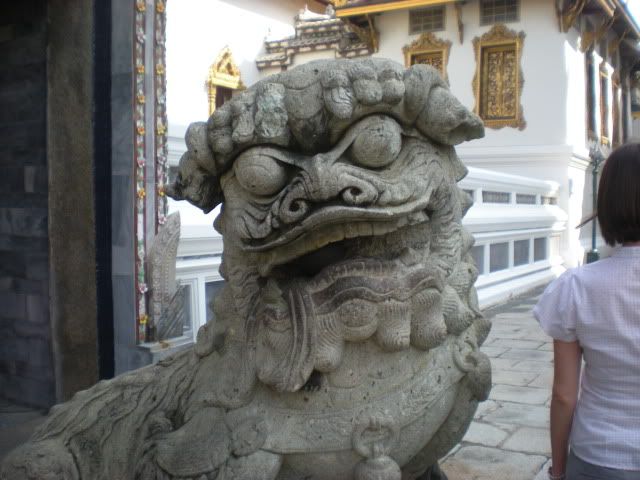
I'm having a hard time finding names for some of these, so if anyone can clue me in, I'd appreciate the feedback. I'm 99% sure the above is a Singha, and below, I have no idea. I have ruled out apsornsi and kinnorn. The cool thing about the Singha, which is hard to see in the picture, is that it is carved from one piece of stone with a ball in its mouth that can roll around. In China this would be called a Foo Dog.
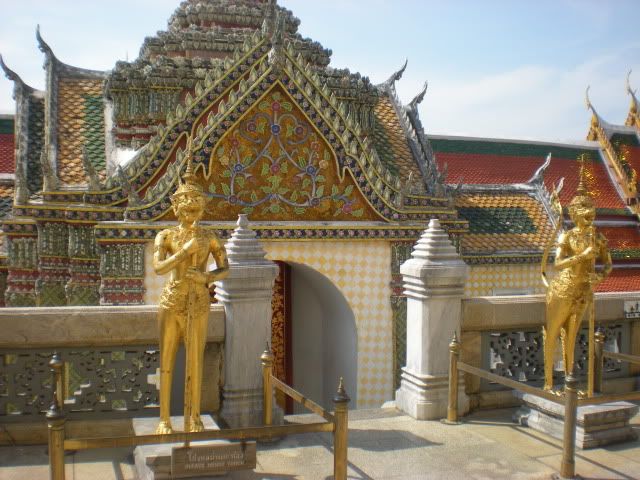

Standing guard at each entrance to the Ramakien Gallery are a pair of Yaksha Demons.
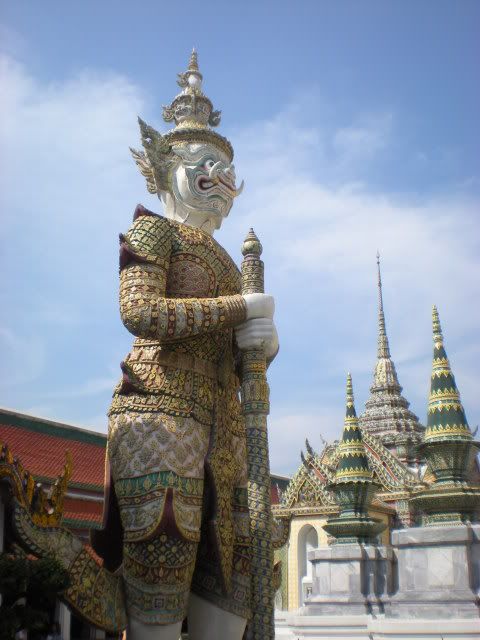

The Ramakien Gallery surrounds the entire complex and tells the story of the Ramakien, Thailand's national epic. The Thai Ramakien is adapted from the Hindu Ramayana, a collection of stories about the work of Hindu gods in the lives of man. The version that Thai people recognize today, and that is illustrated here, was compiled, and even partially written by, King Rama I. The gallery is HUGE. Epic, in fact.

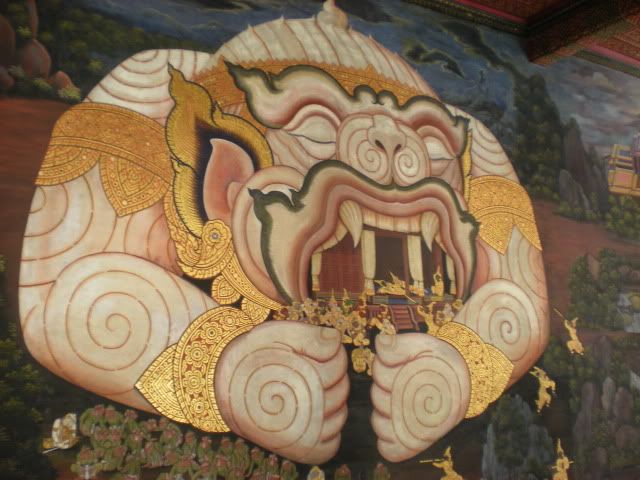
Religion in Thailand, as you can see, is primarily of the Therevada school of Buddhism, but is also heavily influenced by Hinduism, which was picked up from Cambodia during the Sukhothai period (1238-1438 BC), and folk religion, as evidenced by the spirit houses found outside every building in Thailand. I love world religions and I'm on the edge of a major digression, so I promise to come back to spirit houses sometime soon.


There are plaques that tell the story in Thai and English on the pillars around the gallery, but we didn't have much time to read them. There were also several people working on touching up the murals, which is apparently a constant effort since this is all open-air and Thailand is very humid.

And finally, we arrive at the Temple of the Emerald Buddha itself. Ironically, I don't have a clear shot of the building, because it was absolutely mobbed by people and the area in front of the building is full of vendors.

For a fee, you can dip a lotus blossom in water and add a piece of gold leaf to a Buddha statue. I know the lotus blossom thing is for good luck, but I'm not sure of the exact purpose of adding to the Buddha statue.
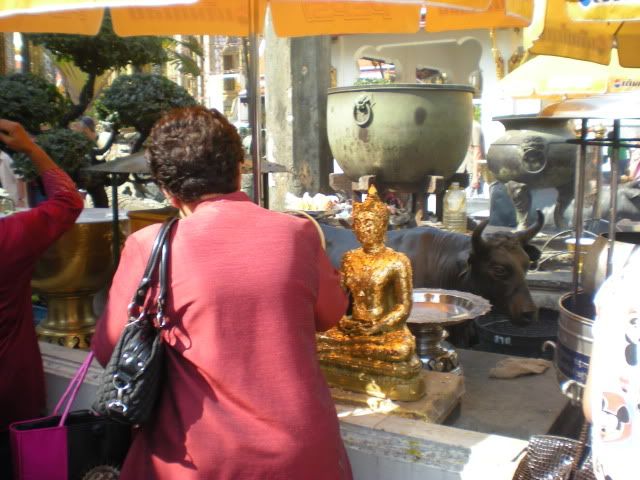
The Emerald Buddha itself is very small, only 26", and is carved from a single piece of green jade. You cannot take pictures inside the temple, but you can go inside to look at it after removing your shoes. The Emerald Buddha has a different outfit for each season (Thai seasons being summer, winter, and rain) and the King is the only one allowed to touch it, including changing the outfits. Rama IX has been in the hospital for quite some time now, so I'm not sure how they are currently handling this.
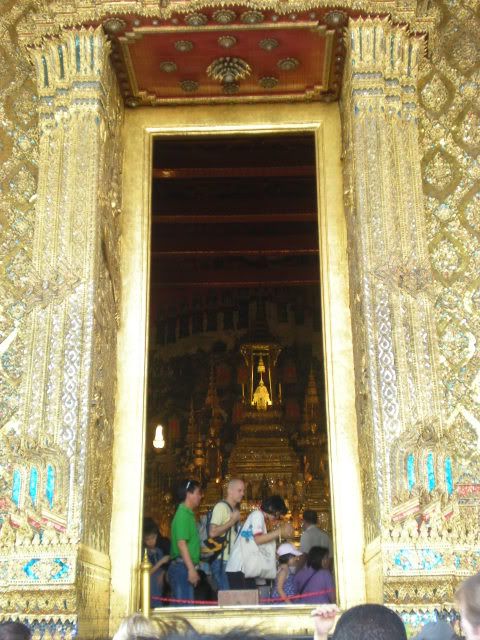
The Emerald Buddha has a long and complicated history prior to its arrival at its current location, which you can read more about at the wikipedia page for Wat Phra Kaew.

Whew, I really hope I got all of this right. I want to thank this Wikipedia Commons Gallery and luxury-travel-thailand.com for helping me identify the buildings in my pictures. I hope you enjoyed the tour!

great post!
ReplyDeleteI think the King's son is changing the Buddha's robes.
One aspect of the Buddhism religion that is practiced in gyms across the world is yoga. This form of exercise allows you to assume different positions and relieve the stress and anxiety that may be plaguing you.
ReplyDeletebuddhist population in china